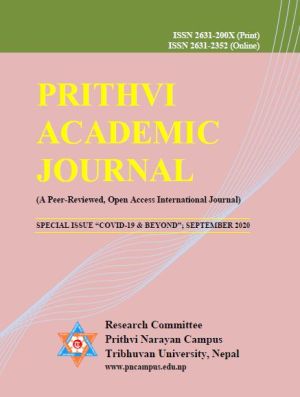Mathematical Modelling of Transmission Dynamics of COVID-19: A Case Study of Nepal
DOI:
https://doi.org/10.3126/paj.v3i1.31283Keywords:
Basic reproduction number, compatmental model, mathematical modelling of COVID-19, numerical simulations, pandemicAbstract
In this study, the SIR compartmental mathematical model has been proposed to predict the transmission dynamics of COVID-19 in Nepal. The model is analysed by deriving some important expressions such as the basic reproduction ratio and possible maximum number of infectives in the future. This study examines the applicability of the SIR model for the study of the COVID-19 pandemic and other similar infectious diseases. The prime objective of the study is to analyse and forecast the COVID-19 pandemic in Nepal for the upcoming time. The estimation of the parameters of the model is based upon data from January 20, 2020 to July 14, 2020. The model presented in the paper fitted to the time-series data well for the whole Nepal and its neighbouring countries such as India and China. The findings suggest that there is a potential for this model to contribute to better public health policy in combating COVID-19.




